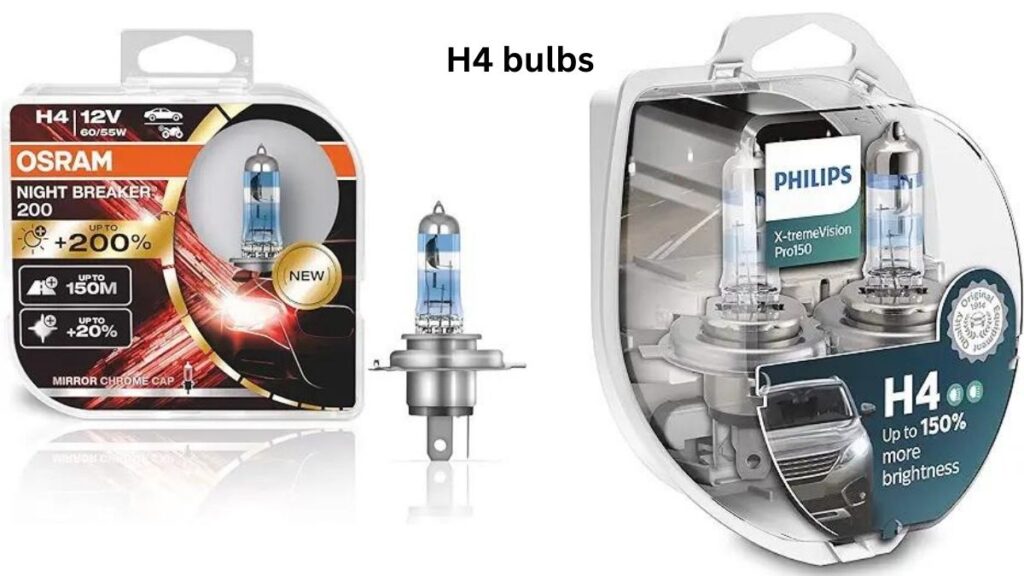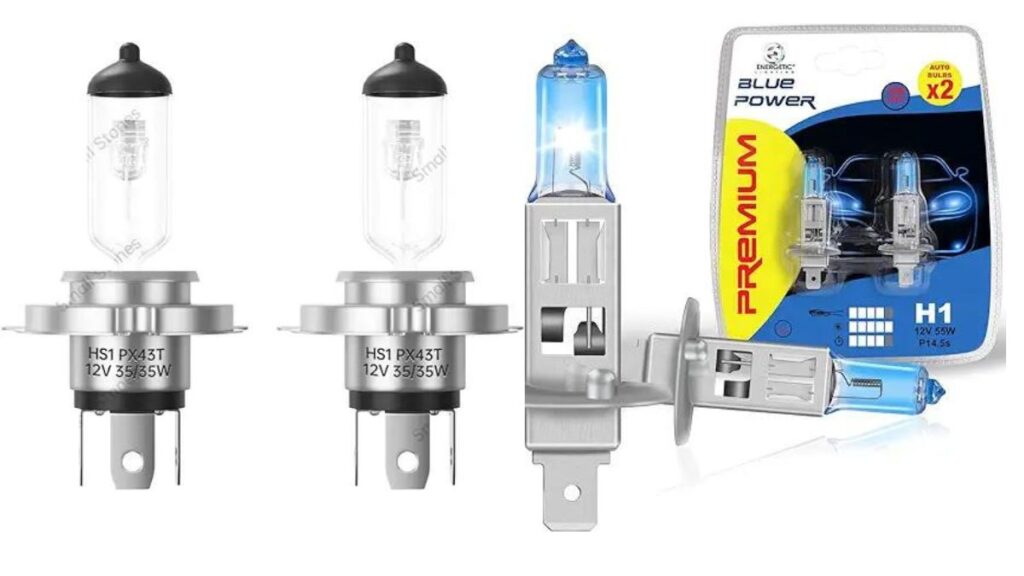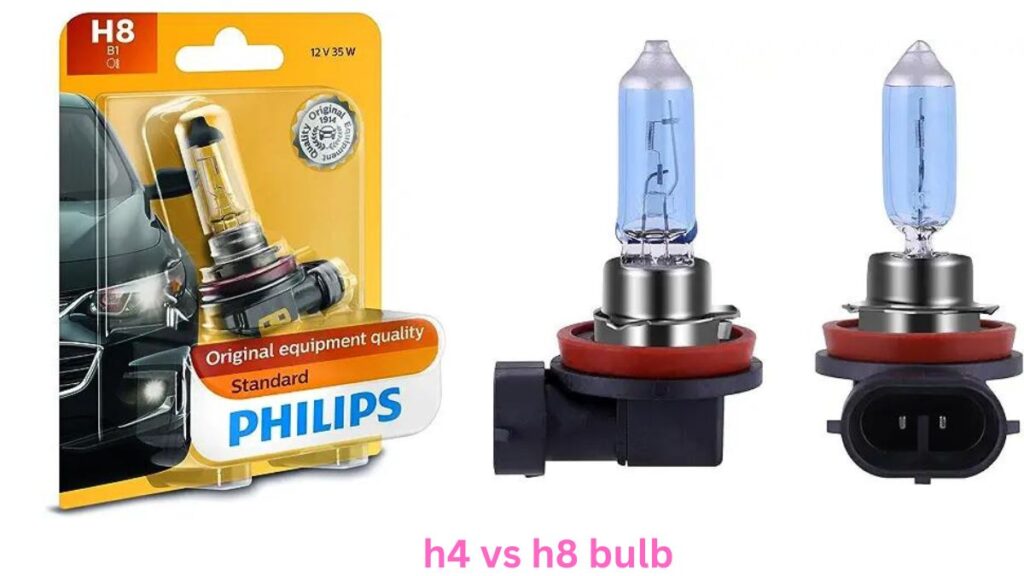When it comes to automotive lighting, selecting the right headlight bulb is crucial for both safety and performance. Among the most common choices are H4 vs H7 bulbs. These two types of bulbs serve similar purposes but have distinct differences in design, performance, and compatibility. In this article, we will explore every aspect of H4 and H7 bulbs, helping you make an informed decision based on your vehicle’s needs and your driving preferences. Understanding these differences will not only enhance your road safety but also optimize your night driving experience.
Understanding H4 vs H7 Bulb Basics
Definition of H4 Bulbs and Their Key Characteristics
H4 bulbs are widely known in the automotive industry for their versatility. They are dual filament bulbs, meaning they have two filaments inside, allowing them to operate as both high beam and low beam in a single bulb. This design makes H4 bulbs popular in vehicles that use the same bulb for both functions. H4 bulbs typically operate at 60 watts for high beams and 55 watts for low beams, providing a good balance of brightness and efficiency.
1. Explanation of H7 Bulbs and Their Primary Features
On the other hand, H7 bulbs are single filament bulbs, which means they only provide either high or low beam, depending on how they are installed in the headlight assembly. This requires vehicles using H7 bulbs to have separate bulbs for high and low beams. H7 bulbs offer a focused beam, providing excellent visibility in low-light conditions.
2. Brief History and Development of Both Bulb Types
The development of H4 and H7 bulbs was driven by advancements in automotive safety and the need for improved night driving visibility. H4 bulbs became popular in the late 20th century, while H7 bulbs were introduced later, as manufacturers sought to optimize light output and beam focus. Both bulb types have seen numerous upgrades over the years, with halogen, LED, and HID versions available today.
3. Common Vehicle Applications for Each Bulb Type
H4 bulbs are commonly found in older vehicles or motorcycles, especially those with reflector headlight assemblies. In contrast, H7 bulbs are widely used in modern cars, especially in vehicles with projector headlights that require more precise beam focus.
Design and Construction Differences
1). Physical Dimensions and Shape Comparison
One of the most noticeable differences between H4 and H7 bulbs is their physical design. H4 bulbs are generally larger and more complex due to their dual filament structure, while H7 bulbs are more compact, focusing solely on a single filament. This size difference can impact how they fit into different types of headlight assemblies.
ii). Filament Configuration: Single vs. Dual Filament
As mentioned earlier, H4 bulbs use dual filament technology, allowing them to switch between high and low beams without needing a separate bulb. H7 bulbs, however, use a single filament, meaning you need separate bulbs for high and low beams. This is a key design difference that affects both performance and vehicle compatibility.
ii). Base Types and Fitting Mechanisms
Both H4 and H7 bulbs come with different base types to fit various vehicles. H4 bulbs often have a P43t base, while H7 bulbs use an PX26d base. These bases are designed to ensure a secure fit in the headlight socket, making installation relatively straightforward for both types.
iii). Materials Used in Construction and Their Impact on Performance
Both H4 and H7 bulbs are typically made from quartz glass and tungsten filament, but newer versions may include xenon gas or LED technology to improve performance. The materials used play a significant role in determining the bulb’s lifespan, heat resistance, and light output.
Performance Comparison
a). Light Output and Brightness Levels
When it comes to light output, H7 bulbs tend to produce a more focused beam with higher lumens, making them ideal for projector headlights that require precise light distribution. H4 bulbs, while slightly less intense, offer the convenience of dual functionality, providing adequate brightness for most driving conditions.
b). Beam Pattern and Focus Capabilities
H7 bulbs are known for their superior beam focus, particularly when used in projector headlamps. They create a more concentrated and precise light beam, reducing glare for other drivers. H4 bulbs, while versatile, may have a less defined beam pattern due to their dual-filament design, which can scatter light more than H7 bulbs.
c). Energy Efficiency and Power Consumption
In terms of energy efficiency, LED and HID versions of both H4 and H7 bulbs perform better than traditional halogen bulbs. However, even within halogen options, H7 bulbs often consume less power due to their single-filament design. This can result in longer battery life and slightly improved fuel efficiency.
d). Lifespan and Durability Considerations
Both H4 and H7 bulbs offer similar lifespan when comparing their halogen versions, usually lasting between 500 to 1000 hours. However, upgrading to LED or HID variants can extend their lifespan considerably, with some lasting up to 50,000 hours.
Installation and Compatibility
a). Vehicle Compatibility for H4 and H7 Bulbs
H4 bulbs are often used in motorcycles and older cars with reflector headlights, while H7 bulbs are more common in modern cars with projector systems. It’s essential to check your vehicle’s headlight housing to ensure compatibility before purchasing either bulb type.
b). Installation Process Comparison
Installing both H4 and H7 bulbs is relatively simple, with most models being plug-and-play. However, due to their different base types and filament configurations, H4 bulbs may take slightly longer to install if modifications are required. H7 bulbs typically have a straightforward installation process, especially in modern vehicles.
c). Potential Adaptations or Modifications Required
In some cases, upgrading from halogen to LED or HID bulbs may require additional adapters or modifications to your vehicle’s electrical system. This is more common with H4 bulbs due to their dual-filament nature.
d). Legal Considerations and Regulations for Road Use
It’s important to consider road legal requirements when installing headlight bulbs. Both H4 and H7 bulbs must meet DOT or ECE regulations to be road legal. Using high-powered HID or LED conversions may also require additional headlight housing modifications to prevent glare and ensure proper beam focus.
Pros and Cons of H4 Bulbs
1. Advantages of Using H4 Bulbs
- Dual functionality (high and low beam)
- Widely available and affordable
- Suitable for both older vehicles and motorcycles
2. Limitations and Drawbacks of H4 Bulbs
- Less focused beam pattern
- May require more frequent replacements in halogen versions
- Not as energy-efficient as single filament alternatives

Ideal Scenarios for Choosing H4 Bulbs
H4 bulbs are ideal for drivers seeking a simple, cost-effective solution that combines high beam and low beam functionality in a single bulb. They are particularly suitable for older cars or motorcycles that don’t require advanced lighting systems.
Pros and Cons of H7 Bulbs
i). Benefits of Opting for H7 Bulbs
- Focused light beam for better night driving visibility.
- Improved energy efficiency, especially in LED and HID versions.
- Superior beam pattern in projector headlights.
ii). Disadvantages and Limitations of H7 Bulbs
- Requires separate bulbs for high and low beams
- Can be more expensive than H4 bulbs
- Compatibility limited to certain vehicles
iii). Best Use Cases for H7 Bulbs
H7 bulbs are the best option for drivers looking for precise beam focus and better nighttime visibility, especially in vehicles equipped with projector headlamps. They are also ideal for those who prioritize energy efficiency and want to reduce power consumption.
Conclusion: H4 vs H7
As we’ve illuminated the key differences between H4 and H7 bulbs, it’s clear that both options have their place in the automotive lighting world. Your choice ultimately depends on your vehicle’s specifications, driving needs, and personal preferences. Remember, proper visibility is not just about seeing the road ahead, but also about being seen by other drivers. Whether you opt for the versatile H4 or the focused H7, ensuring your headlights are in top condition is crucial for safe driving. Take the time to assess your vehicle’s requirements and consult with a professional if needed. After all, when it comes to road safety, it’s always better to be bright than sorry!
Hi, I’m Malik Suhail—an SEO expert, web designer, and passionate blogger with 2 years of experience. I specialize in crafting content that is not only informative but also tailored to meet the needs of my readers.
I write about diverse topics, always striving to simplify complex ideas and provide valuable insights that resonate with my audience. Whether it’s about SEO strategies, web design trends, or blogging tips, I am committed to delivering well-researched, practical, and easy-to-understand information.
My mission is to help readers navigate the digital world with confidence and clarity. I believe in adding value through authentic content that inspires action and delivers results.


